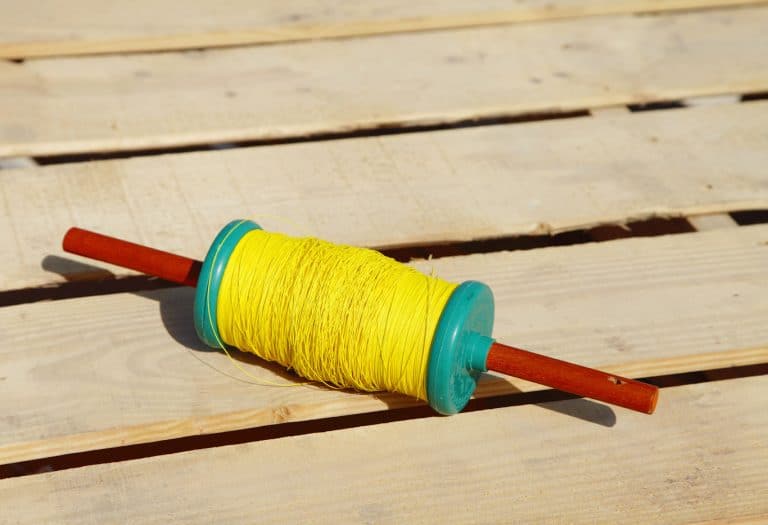How Many Ounces Does A Kite Weigh?
Should one take note of the weight of a kite before purchase? How does one determine the mass of a kite? This article delves into kite weight and what this means for kite flying.
The major components are the kite surface and the kite frame. To find the total weight, we add the weight of its exterior and the frame’s weight.
Let’s dive into the world of kite weights. We’ll shed some light on the kite weight issues you need to learn about. Let’s get flying!
What Is The Weight Of A Kite?
How a kite performs when in flight is directly related to the forces of flight. Before building a kite, therefore, it’s crucial to determine its weight. It happens during the design process.
Kites consist of their frame and their surface, which means that the total weight of kites is a total of the surface weight plus the frame weight (Source).
Sticks and strings are the typical components of kite frames. The sticks need to be of strong yet light material. These include plastic tubes or wood (e.g., bamboo). The material used on the frame and its size and shape determine its total weight.
In the same way, the material used, shape, and size of the surface determine its total weight. Common materials used on kite surfaces include plastic, paper, and cloth.
The weight of kites, whether in heavy, light, or standard winds, significantly impacts kite flies. It includes the wind range that will apply to the kite and its stability in flight (Source).
Kites with a lighter weight have a better chance of not being subjected to undesirable phenomena such as resonance. The wind should hold up the kite and not its mass. Note that kites used in indoor kiting are incredibly light because no wind or very little wind is required.
While kiting is fun for the young and elderly alike, it is equally educational, given that it is fundamental physics, kite engineering, and learning about the weather. For instance, the amount of wind required to fly a kite. Can one fly in all winds? Or is it possible to have too much or too little wind? (Source)
The amount of wind required to fly kites is dependent on several factors. Kite shape does matter, with some subject to be more aerodynamic than others; such kites need very little wind to fly. The weight and size of the kite also matter. Heavier kites will require more current to get their weight up in the sky.
How Does Weight Work On A Kite?
Kites consist of several components, including the kite line, body, and harnesses. All these play a relevant role in ensuring the kite gets adequate wind and flight. The kite body, in particular, is made up of a framework and a covering (Source).
The lightweight material is necessary when building the kite framework. It makes materials such as wood and plastic ideal. The covering is spread over the framework to form the kite wing. The surface can be plastic, fabric, or paper.
The forces of flight are necessary for any flying object to get in the sky, including airplanes. These forces are thrust, drag, lift, and weight.
The earth’s gravitational attraction generates a downward force on the kite, also known as weight. On the other hand, lift pushes the kite upwards because the leverage is an upward force. This force is a result of air pressure differences.
This difference is created over the kite’s body by moving air. When shaping and angling kites, the kite operator must make sure the air moving on the top is faster than that on the bottom.
Ultimately, kites are pushed into the air because the airspeed below the kite is lower than the speed above, which means that lift forces must be greater than the weight for kites to launch.
However, launching the kite is only part of the kite flying process. There are other phases of the kite flying process. The stages are launch, climb, release and cruise. Once the kite launches, it needs to stay airborne. For this to happen, lift, weight, drag, and thrust must remain balanced, whether the kite is heavy or light (Source).
After the successful launch of the kite, the kite will keep climbing in the sky by skillfully tugging on the strings at the right time. The kite may move around, swoosh, and even dip when there is an intrusion with the attained balance. The only way to solve this is by rebalancing the forces.
In some cases, adding a tail to the kite becomes necessary. Backends add to the kite’s weight, which enhances the backward force of the kite.
What Is The Weight Of A Kite String?
The length and weight of one’s kite line are highly dependent on the wind conditions of the local flying area and the kite in question (Source).
Lines are also known as kite strings or threads. The amount of stress that a kite string can handle before it breaks is line weight. Stunt kites and power kites require lines with different weights. The line weights on power kites will need to be more than that on stunt kites (Source).
Lines with larger weights will be able to handle more pressure. Such lines take some time before they break. However, keep in mind that several factors affect the integrity of strings and can become damaged with time. Some of the factors include ultraviolet rays.
Summary
Heavier kites produce more drag, which means that lift also needs to increase to launch such kites compared to lighter kites. Recommended kite weight will differ from kite flyer to kite flyer. One’s weight (for kite surfing) and skill level will be vital factors before purchase.






